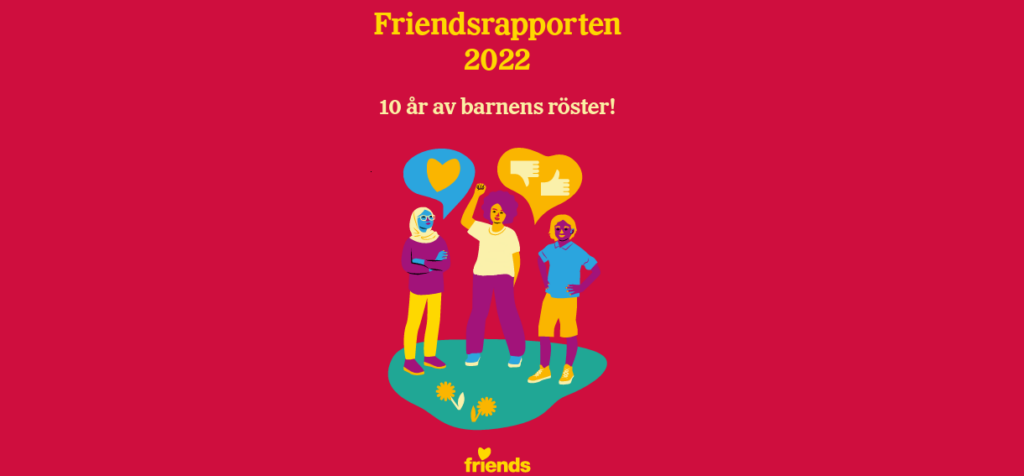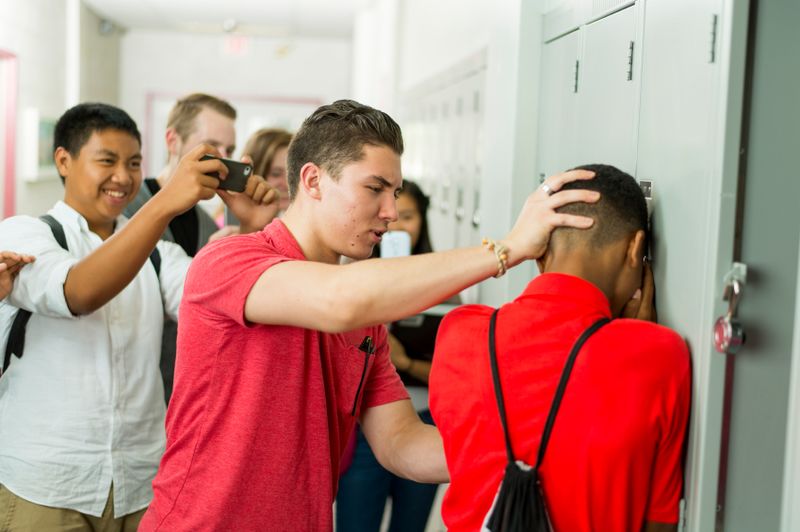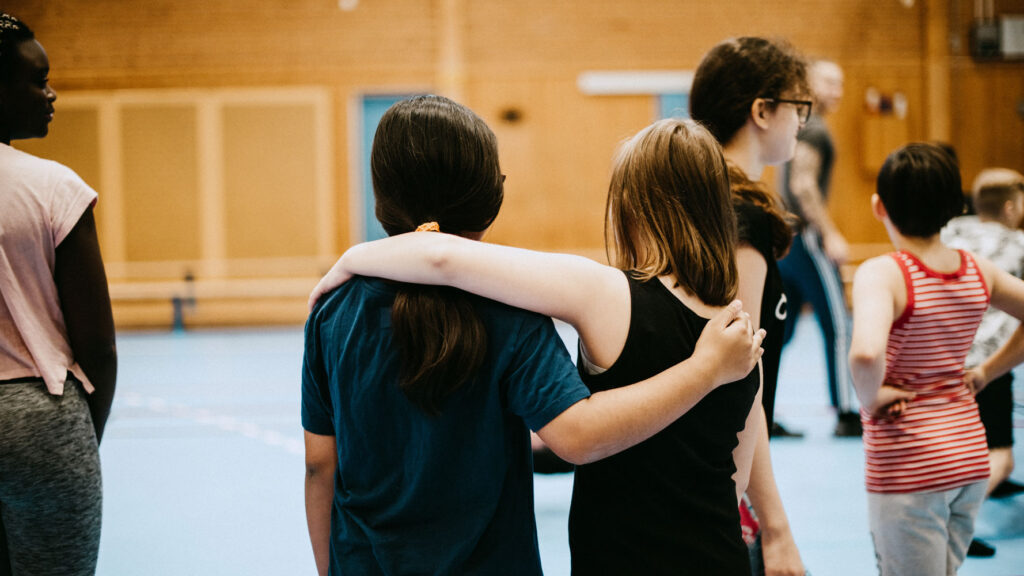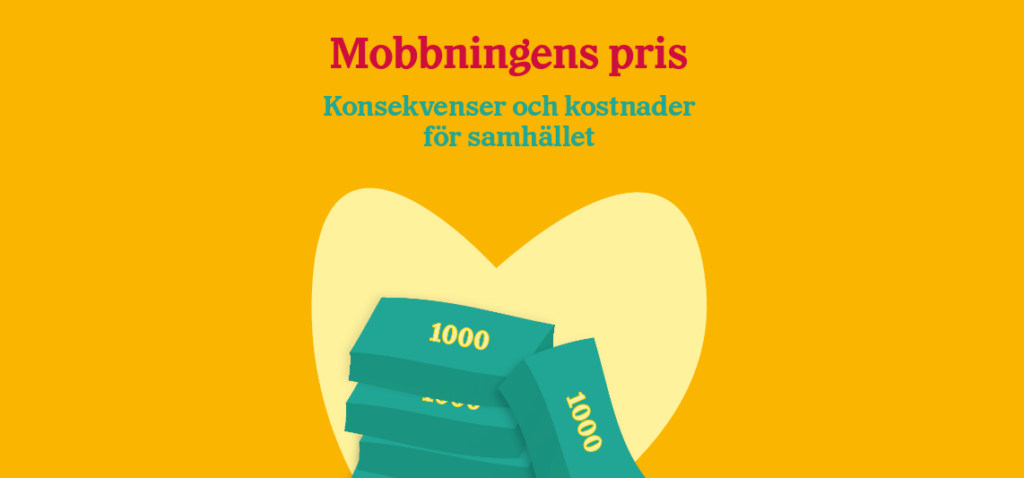This interview was conducted in September 2022 and has been edited for brevity and clarity.
Vill du istället läsa artikeln på svenska? Klicka här!
About Friends and Maja Frankel
Friends is a children’s rights organization striving to prevent bullying among children and youth. It was founded in 1997 by Sara Damber with the vision of defeating bullying. The work today is interdisciplinary, with a combination of research and proven experience. The organization collaborates with schools, preschools and sports associations throughout Sweden. Friends holds trainings, tests and evaluates different working methods, as well as provides advice and guidance. In 2012, the naming rights for the new national sports arena in Solna were given to Friends and since then it has been called Friends Arena. Friends is also the founder of the World Anti-Bullying Forum, the world’s largest conference for work against bullying with hundreds of participants from all over the world. This year, Friends celebrates 25 years and has now published an annual report on bullying among children and young people for ten years.
Since January 2020, Maja Frankel has been Secretary-General of the Friends foundation and has previously worked in senior positions at both Ashoka and UNICEF.
You have now published an annual report on bullying for ten years. What trends can you see?
– During these years, we have collected a large amount of data. Over 230,000 children have answered our surveys over the years. We can see three clear trends and unfortunately all three are negative. The first shows that children’s trust in adults is steadily decreasing. It is serious because an important protective factor when it comes to bullying, violations and harassment is trust in the adult world. The feeling that if something happens, I have an adult to talk to, who will act. We can see that this confidence drops the most in the younger ages.

For the tenth year in a row, Friends has released its annual report on the safety situation in Swedish schools.
– The second trend shows that girls are particularly vulnerable, especially in grades 3-6. They feel more lonely, are more often worried about being alone at school and are more often exposed to sexual harassment and abuse, both at school and on the Internet. For example, it could be that a girl has sent a private picture of herself to her boyfriend, which is then spread. Not once, but year after year and it never goes away. Girls in that situation often feel guilt and shame because they sent the picture themselves, but it’s still an offense!
“I mean, if even the school staff don’t feel motivated for the children’s safety, then who will?”
– The third trend we can see is that the school staff’s motivation for safety work at schools is dropping. There are presumably several reasons behind this, but we believe that one important explanation is that the issue of bullying has fallen on the prioritization agenda. Although the Swedish School Act is clear when it says that it’s a requirement to prevent abusive treatment, it is still up to each school principal to decide how to do it. This means in practice that if I would start a school tomorrow, I can do more or less how I want with the safety work. What the research has taught us is that it does not matter which particular safety program a school works with, but what is important is that they work with the issue in a systematic way. Unfortunately, it often ends with just creating a “friend tree” at the beginning of the semester and then there is no follow-up, no further training for the staff and no mapping of the students’ experiences. This third trend really broke my heart. I mean, if even the school staff don’t feel motivated for the children’s safety, then who will?
One of the trends you mention is that girls are more vulnerable than boys. What more is known about the differences between boys and girls when it comes to bullying?
– It is much more common for boys to bully other children. It is common for boys to bully both boys and girls while it is common for girls to bully girls. However, it is unusual for girls to bully boys. This means that girls are vulnerable from two directions. In general, bullying takes different forms depending on gender. Boys’ bullying is often physical with elements of violence. Girls’ bullying is of a more relational nature, for example ostracism, stares and offensive comments. That type of bullying is often more difficult for adults to identify because it can go on for a long time before someone understands what it is about. “What a nice sweater” can mean something completely different and be a continuation of something that has been built up for months.

Are there any common denominators among bullies?
– It is not a specific type of person who bullies. Bullying is about power in social relationships. Something we can see is that children who deviate from the norm are more vulnerable. We can also see that children with neuropsychiatric disabilities, such as ADHD, ADD and autism, often have more difficulty adapting to the school system. If adaptations that these children need are not offered, it can lead to behaviors where they try to find their place in the social hierarchy. But there is no stereotype. It is ultimately about behaviors rather than people. We can see that the person who bullies more often has a higher status than the person who is victimized.
– A bit simplified you can say that bullying is about social relations and there will always be power relations in social relations. The classic definition of bullying is someone doing something on purpose to put someone else down, in order to gain a higher status and it happens repeatedly. Children will always try different ways to increase their status in the social hierarchy. Adults’ responsibility is then to provide alternatives to it. It can be to explain early on how we should act towards each other, t0 say that you understand why the child got angry in a certain situation, ask what he or she could have done instead and so on. The answer is often to talk to an adult to resolve a conflict. Unfortunately, it is precisely this guidance that we see many adults backing away from.
“If you feel unsafe, your stress system gets activated, which makes you unreceptive to new knowledge. A school that really wants to raise the level of knowledge should therefore invest in safety!”
– There is research that describes bullying as a goal-oriented behavior. That is, bullying others is something functional and reasonable to do because it leads to those who bully getting something they want. The article “Why Do Bullies Bully? Motives for Bullying” by Jua B. P. Sanders, Sarah Malamut and Antonius H. N. Cillessen lists a range of possible motives for bullying, such as dominance and power, status in the group, access to resources, revenge, establishing justice or social norms, belonging, maintaining romantic relationships, identity, entertainment.

You highlight safety work as among the most important. What results have your research shown regarding this?
– For three years, researchers monitored schools to map reasons why bullying increased or decreased. Seven key factors could be identified. It was extremely clear that if a school has a high staff turnover, the entire systematic safety work fails. A key factor for success is that there is a dedicated management team and a principal who understands the correlation between knowledge and safety. In Swedish schools, there is total focus on knowledge rather than safety, even though research shows that if you feel lonely for example, the probability that you will fail your classes increases. There is strong research support for the fact that safety and a good school climate are important both for students’ learning and their social development. If you feel unsafe, your stress system gets activated, which makes you unreceptive to new knowledge. A school that really wants to raise the level of knowledge should therefore invest in safety!
“Now, imagine a large company where 7% of the employees had been exposed to serious violence in the past year. How would society react to that?”
– I’m also struck by how society makes a difference between children and adults. We did a nationwide survey this spring which showed that 7% of all children had been exposed to physical violence at school in the past year, to the extent that they needed to see a dentist, school nurse or doctor. Now, imagine a large company where 7% of the employees had been exposed to serious violence in the past year. How would society react to that? That workplace had probably been shut down immediately. But when it comes to children, we normalize these things, which is a mystery to me.
As a parent, it’s frightening to think about the possibility that one’s children will be subjected to bullying or bully other children themselves. What preventive measures can parents take to reduce the risk of this happening?
– So much! First, we can be present in our children’s lives. Many parents can probably recognize that children usually don’t want to talk when we adults want to. As a rule, children prefer to talk in situations where the parent had not intended it, for example when you stand with your back to them and cook. It is also important to talk about things that are relevant to the child. Is the best question to ask really what the child had for lunch? Or is it perhaps more relevant to ask which influencers the child looked at today and what they talked about? We parents need to take advantage of the times when the child wants to talk and think about listening instead of always trying to solve their problems.

– I can also recommend our “mobile phone driving license” that we developed together with a telecom company. The average age for getting the first mobile phone is today approximately 8 years. The mobile phone driving license requires that you and your child go through a few digital educational sessions that cover all the great things on the Internet, such as music, culture, and social relationships, but also the risks that exist. It gives children and adults a common language to use when talking about all these risks.
– Last but not least, we adults need to think about how we behave. How do you talk about other people? How do you comment on other people’s clothing, hairstyle, opinions? How do you express yourself on Internet forums and in comment sections? 60% of all children have seen adults misbehave on the Internet. We must never back down from our own responsibility.
One question you ask in your annual survey is about which locations in schools that are perceived as most unsafe. What do the results show?
– Restrooms and changing rooms have been at the top of the list for all these years. It’s not very surprising if you consider the common denominator in those environments: there are no adults present there. What the children suggest as a primary solution is just that, more adults. Besides from that, they suggest several solutions that are simple but would make a big difference. First, don’t place the restrooms right next to the school’s rec room. No one wants to go to the bathroom when everyone is sitting right outside. Also, remove the gap between the door and the floor and start playing music in the restrooms. The fear of other children hearing causes many to avoid going to the toilet at school. At one school, the children responded that they would be more comfortable showering after physical education class if the shower rooms had individual stalls, but also if adults were present.
Will bullying always occur? Is it somehow built into our nature?
.- Bullying is absolutely not built into our nature, but we are social beings who will always try to raise our status in the group in various ways. What happens in the next step however, is not given by nature. There are schools that have no bullying, so of course it can be done, but it requires that the child is given options and that the rules are clear. It requires adult presence and that moral courage among children is high. We can influence all of that!

Friends recently published a report about the consequences and costs bullying leads to on a societal level, called The Price of Bullying (“Mobbningens Pris”).
Can you mention some of your recent initiatives, besides the annual report?
– We have just launched the so called Knowledge Bank. We hope that it can help schools to map their safety situation and to increase their competence. The Knowledge Bank also gives parents the opportunity to learn about where to turn if a child is being bullied. We also published a report recently called The Price of Bullying (“Mobbningens Pris”). Economists calculated that the bullying that takes place this year, 2022, will cost society about 4.5 billion USD over the next 30 years. Behind these costs are for example, that fact that bullying often leads to the victims dropping out of school, families falling apart, parents end up on sick leave, lose income, increased healthcare costs, later entry into the labor market and so on. If you instead were to employ two counselors at each school, to only work preventively against bullying, it would cost about 0.1 billion USD. In addition to these hard numbers, you also have to weigh in the soft values and think about all the suffering that is involved.
What book would you like to recommend?
– I have just read the book My name is not Miriam by Majgull Axelsson, which I really liked.
If you liked this article, you should probably also check these out:

